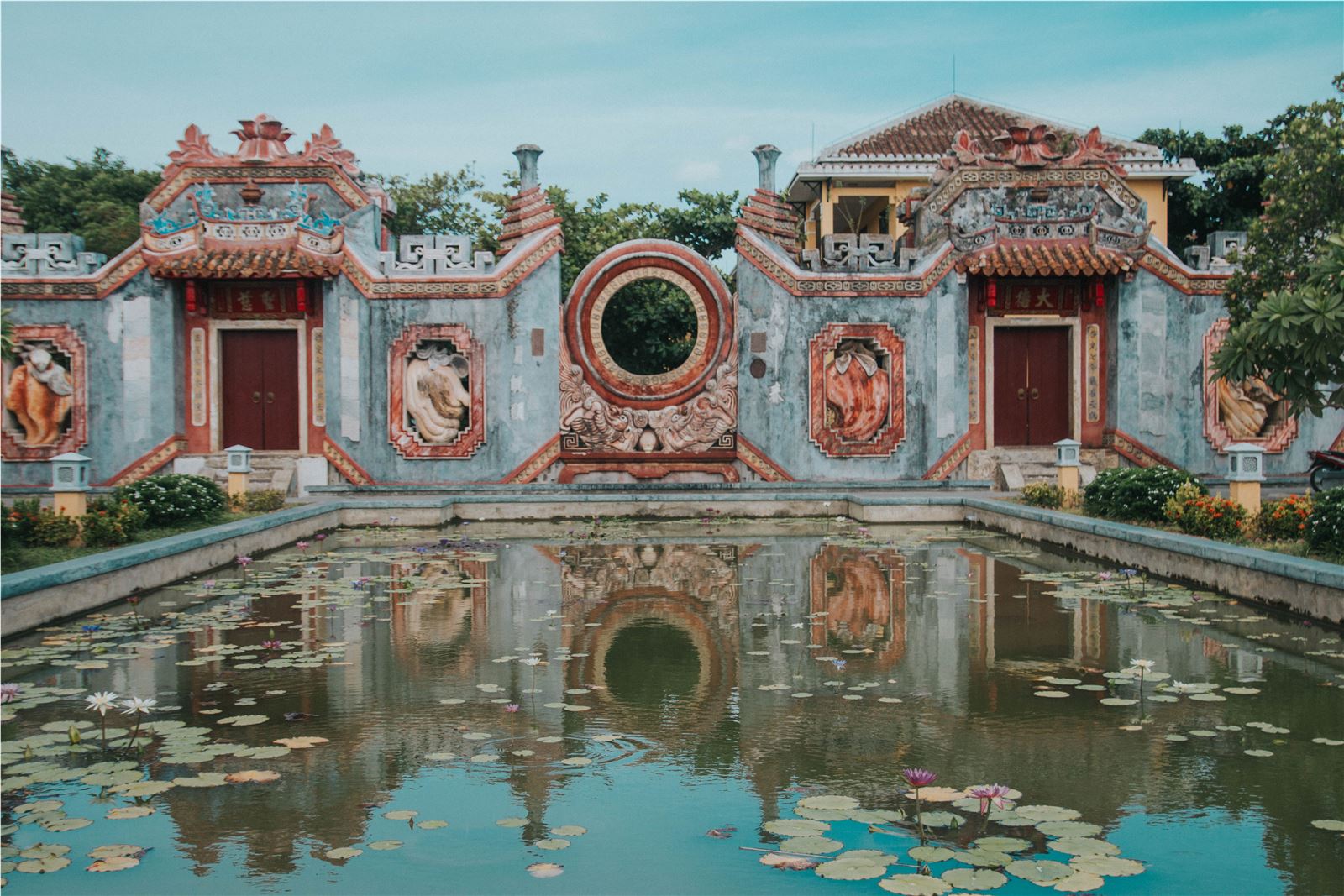Ba Mu Pagoda preserves the architecture of Asian breath, which is the unique cultural intersection of Hoi An commercial port. This work also reflects the rich cultural and spiritual life of Minh Huong villagers, Hoi An.
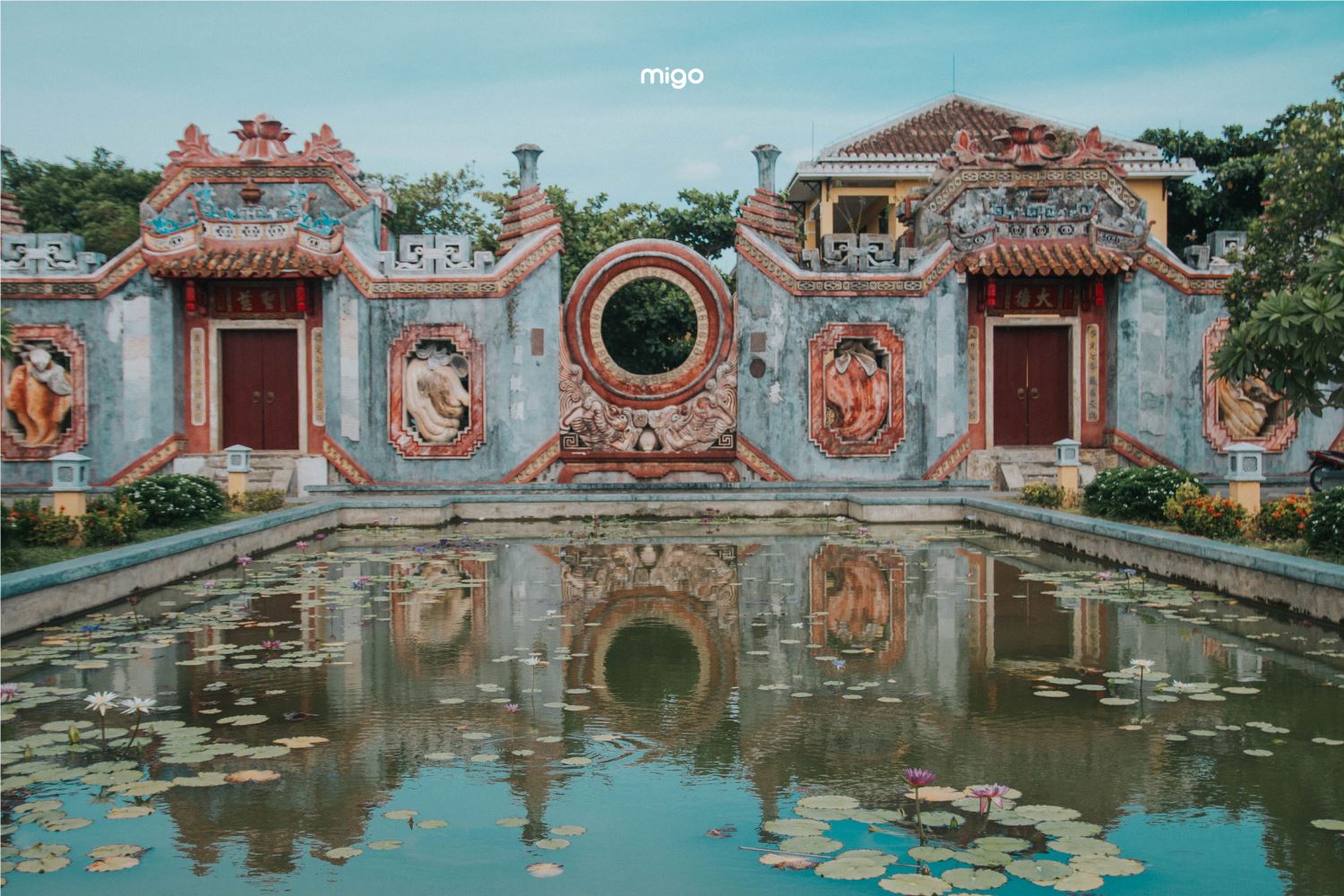
Located in the heart of Hoi An ancient town at 675 Hai Ba Trung Street, Ba Mu Pagoda Tam Quan Gate looks at the street, witnessing the changes of Hoi Street. This place was once rated as the most beautiful architecture in Quang.
The unique architecture, elaborate carvings, outstanding colors of this building make visitors to the old town and passing by want to stop by to take commemorative photos. This is also the place for photographers who want to capture colorful photos of Hoi Street. This building is also located next to other relics of Hoi An such as Teochew Assembly Hall.
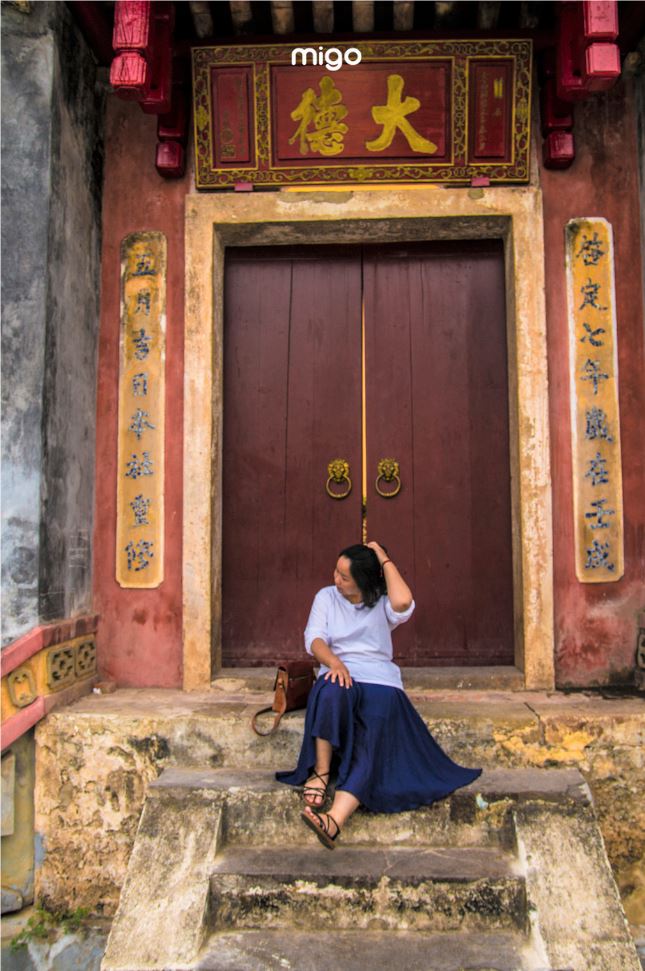
The striking but ancient colors, combined with rustic wooden doors make the space here ancient. Tam Quan Gate stands out against the blue sky of Hoi An. In front of Tam Quan Gate, there is a lake dropping water lilies, clear as a mirror. Tam Quan casting a shadow on the surface of the lake creates an interesting reflection among the green ecosystem.
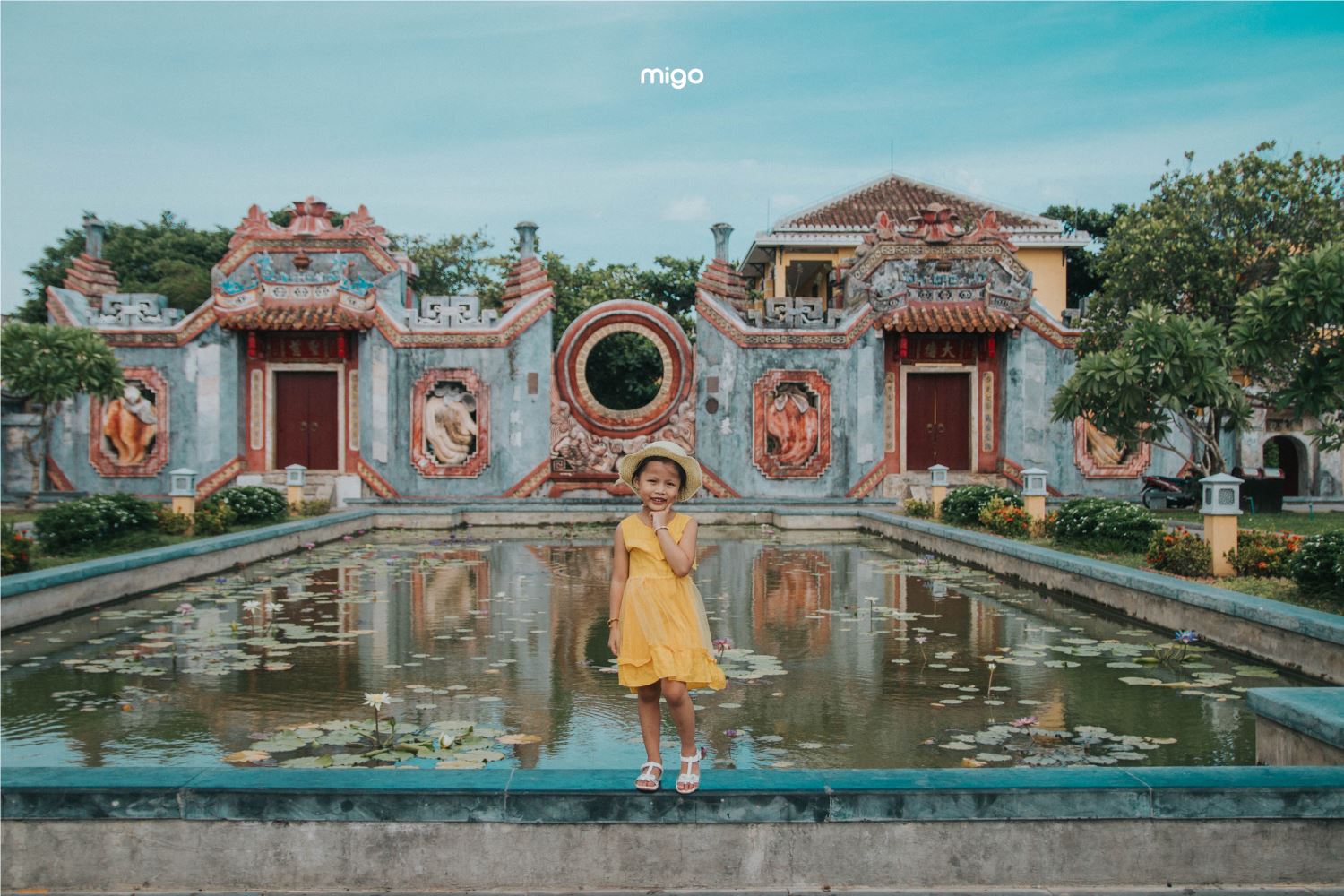
Ba Mu and Mr. Chua Pagoda is named Hai Binh and Cam Ha palace., Later, folk handed down the name Ba Mu Pagoda to be easy to remember and read. The ruins of Ba Mu Pagoda were first built in 1626 under the reign of Emperor Hy Ton Hieu (the title of lord Nguyen Phuc Nguyen) at another location, which was later relocated to its current location. The restoration period spans hundreds of years with 2 waves in 1848 and 1992, the work converges the beauty of time, culture and spiritual life of the people.
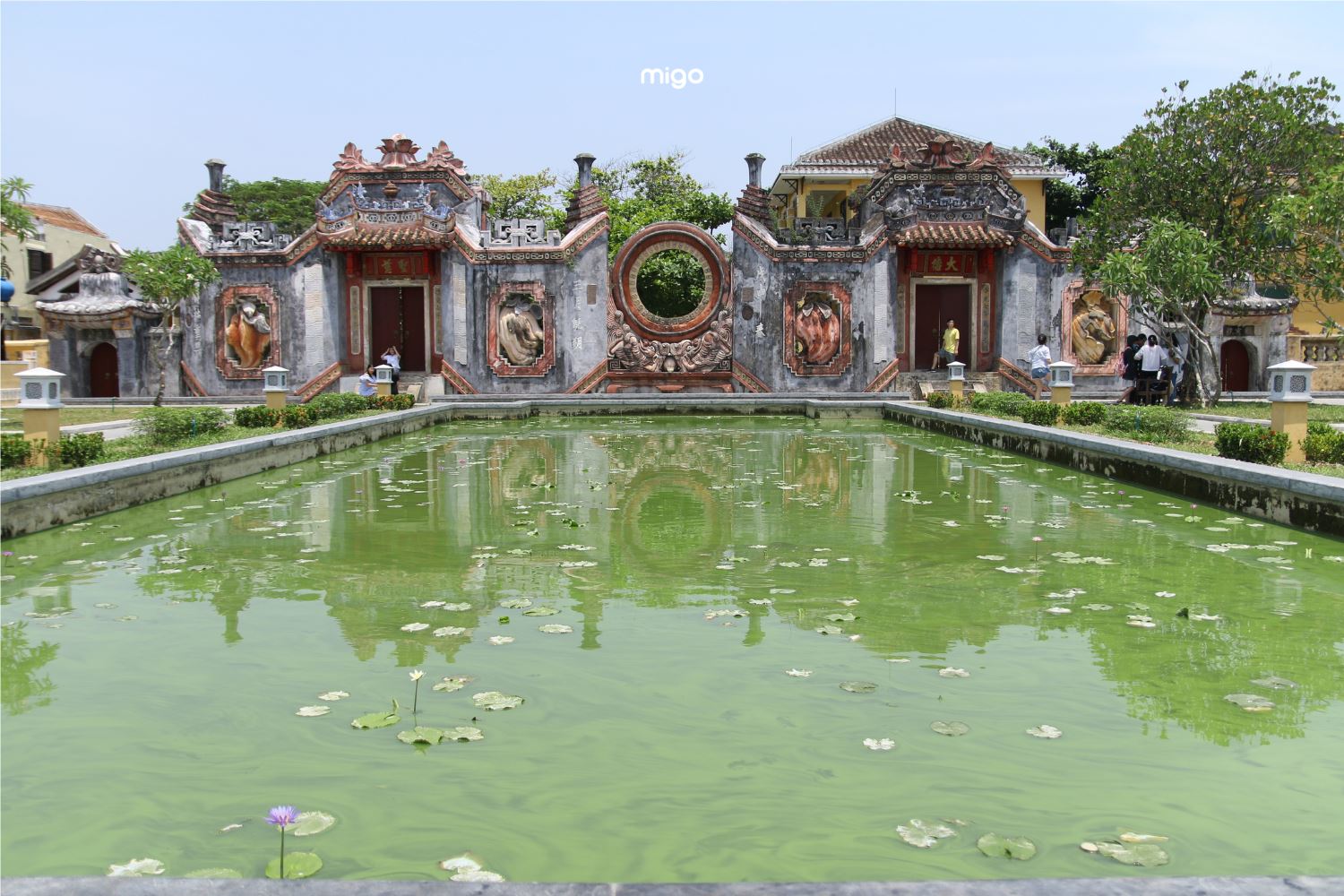
The pagoda consists of a three-pavilion house with a large courtyard. The central nave in the Hall is Hai Binh Palace, where the Holy Mother is worshipped, 12 midwives, along with statues of the two gods Thien Li Yan and Thuan Phong Er, which are worshipped in front. Cam Ha Palace is located in the left pavilion, is the place to worship Bao Sanh Dai and statues of 36 gods arranged in two neat, majestic rows. The other pavilion is a place of worship for Turkey and the Mingxiang Family.
Over time, the building was ruined, leaving only the entrance gate of today's Tam Quan gate.
Article and photo: Le Phuong
